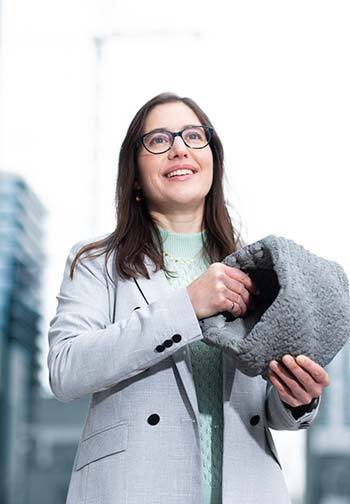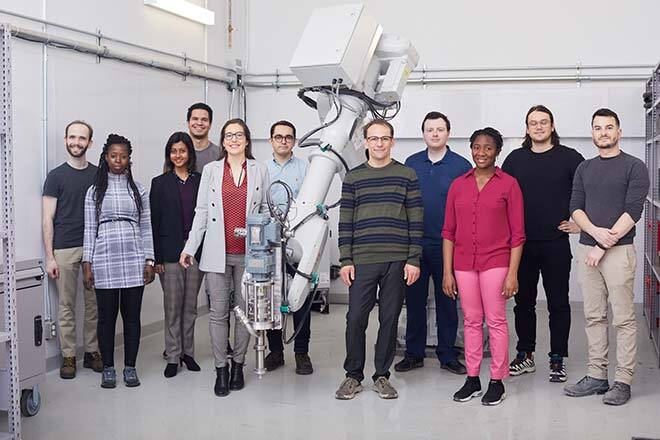
Designing sustainable and even intelligent building materials adapted to the challenges of climate change; reclaiming waste materials; improving performance throughout a life cycle… These are the things that energize and motivate Claudiane Ouellet-Plamondon.
A professor in the Department of Construction Engineering since 2014, Claudiane Ouellet-Plamondon is very busy. She contributes to the publication of numerous scientific papers, she teaches, and conducts research. “I’m interested in designing materials that will address construction challenges. This includes developing new formulas and manufacturing processes, also considering their environmental impacts.”
As chairholder of the Canada Research Chair on Sustainable Multifunctional Construction Materials, Professor Ouellet-Plamondon is also interested in moving materials from one industry to another as a potential recycling solution. Specifically, she and her team are looking at ways to recover residue from primary aluminum production. This is a major industry in Quebec, the largest producer in the world.
“This residue could be buried, but it still has value as material. Cement plants have shown interest in it,” she explains. Since the cement and concrete industry is highly regulated and standardized, research teams must ensure that it meets the standards for residue use in the next industry.
Back to Basics for the Materials of the Future

Claudiane Ouellet-Plamondon’s research also focuses on construction materials. She is inspired by bio-sourced materials like hemp concrete or earth in imagining the materials of tomorrow.
When it comes to sustainable construction, earth is hard to beat. “Half of humanity still lives in earthen constructions. The material requires little transformation and has been used throughout history. And now it needs to be documented, studied. What are the effective binders? What is its resistance? What is its thermal and sound insulation? How can our expertise in wood structures help with earthen constructions?”
Sustainable Development: A Focal Point
“I have always been interested in sustainable development. And also in the limitations of our planet. The great limitations are known and we are exceeding them at some levels. When this is the case, what can we do to adjust and get it right?”
This is the question at the core of Claudiane Ouellet-Plamondon’s work. To have true impact, sustainable development must be cross-functional—as well as economically, socially, and environmentally friendly. “In each of our projects, we try to connect the dominant issue to the other axes.”
Creativity and Perseverance
The climate crisis is changing the game and requires different, adapted materials. There are still many unknowns and unanswered questions. And this is exactly what Professor Ouellet-Plamondon likes best. “It’s the ideation and solution development phase that I like best.” The implementation of solutions and the relationship developed with the companies and organizations involved in the projects are also a source of motivation. One of her new projects is striving to find solutions to counter erosion resulting from increased navigation in the St. Lawrence River using printed materials. Another recent project aims to promote arts, science and engineering.
She makes no secret of the fact that applying for funding, protocol-related activities, and the start-up and follow-up phases take a lot of perseverance until the end results. Especially because of the time and attention to details these steps can sometimes necessitate. Without these necessary steps, research is not possible.

This is the advice or rather the warning she would have liked to receive. “It’s true that you must choose to work in your field of interest, but in research, you also have to find the resources. It’s more complex and it takes energy, so you must be passionate. But it’s essential if we are to take our place, develop a field, and show our leadership.”


